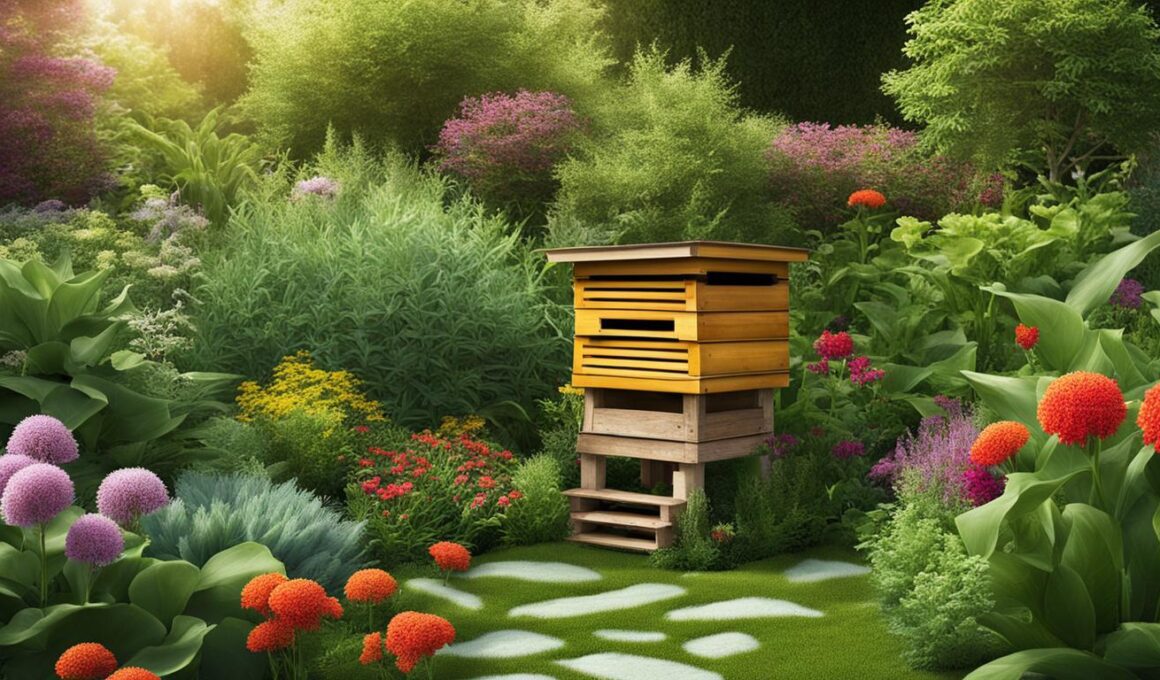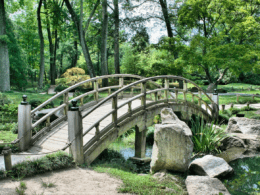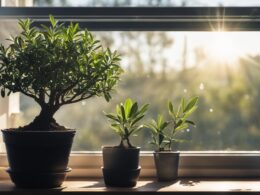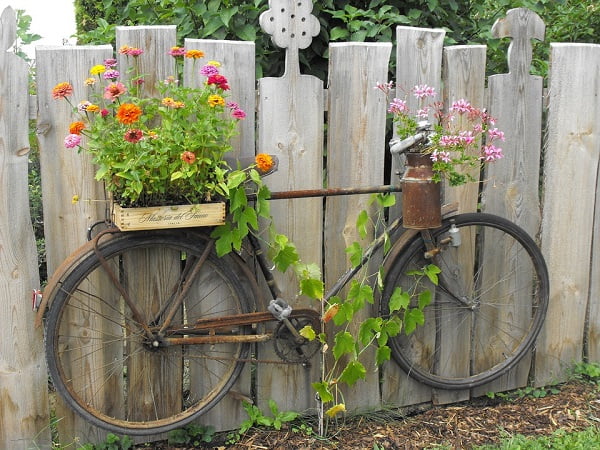Bees are essential pollinators that play a crucial role in our ecosystem. However, for those with bee allergies or a fear of flying insects, it’s important to know which plants don’t attract bees. By carefully selecting the right plants for your garden, you can create a bee-free haven while still attracting other delightful creatures like hummingbirds and butterflies.
When it comes to choosing bee-unattractive plants, color and scent are key factors to consider. Bees are naturally drawn to purple, violet, and blue flowers, while red flowers with ultraviolet markings can also catch their attention. Additionally, bees are attracted to flowers with pleasing scents, like lavender and chamomile. By avoiding these color and scent preferences, you can discourage bees from making your garden their primary destination.
Furthermore, bees are primarily attracted to flowers with rich nectar and pollen stores. They are guided by dark lines and UV light patterns on flower petals, as well as flowers with wide landing platforms and shallow, tubular corollas. However, certain flowers, such as cucumber, geranium, and marigolds, can deter bees from visiting your garden.
So, if you’re looking to create a bee-free garden while still attracting hummingbirds and butterflies, make sure to choose plants that don’t attract bees. By understanding their color and scent preferences, as well as their nectar and pollen requirements, you can curate a beautiful and bee-free oasis.
Key Takeaways:
- Choose plants with colors that bees find unattractive, such as red-hued blooms.
- Opt for flowers with scents that bees don’t like, like Mexican marigolds and chrysanthemums.
- Select plants that don’t have rich nectar and pollen stores to discourage bee visits.
- Avoid flowers with wide landing platforms and shallow, tubular corollas, as these attract bees.
- Consider choosing flowers with trumpet shapes and long corollas to attract butterflies and hummingbirds instead.
The Color Factor: Choosing Bee-Unattractive Plants
When it comes to creating a bee-free garden, the color of your flowers plays a significant role. Bees are attracted to colors that have shorter wavelengths, such as purple, violet, and blue. These vibrant hues are like a beacon for bees, drawing them in for pollination. However, there is one color that doesn’t seem to captivate their attention: red.
Red flowers have a unique characteristic that makes them less appealing to bees. From a bee’s perspective, red flowers appear green and blend in with the surrounding foliage. This natural camouflage makes it difficult for bees to spot red blooms and reduces their interest in visiting them. While most red flowers are unattractive to bees, some varieties with ultraviolet markings can still catch their attention. So, if you want to avoid attracting bees altogether, choosing flowers with red-hued blooms is your best bet.
It’s important to note that bees see color five times faster than humans, allowing them to quickly identify attractive flowers. By selecting flowers with red blooms, you can create a garden that not only adds a touch of vibrant color but also keeps bees at bay. So go ahead, embrace the beauty of red and enjoy your bee-free oasis.
| Color | Attraction Level for Bees |
|---|---|
| Purple | High |
| Violet | High |
| Blue | High |
| Red | Low |
Scents That Bees Don’t Like
When it comes to attracting or repelling bees, scent plays a significant role. Bees have an extraordinary sense of smell and can distinguish between different species of flowers based on their scents. While some flowers with pleasant aromas like lavender, hyssop, chamomile, and sage may be irresistible to bees, there are certain scents that bees find unpleasing.
Flowers with unpleasing scents for bees include Mexican marigolds, chrysanthemums, cinnamon, geranium, cucumber, and citronella. These scents, although they may not bother humans, can deter bees from frequenting your garden. By incorporating these bee-repellent scents into your garden, you can create a bee-free environment while still enjoying a beautiful floral display.
“By incorporating bee-repellent scents into your garden, you can create a bee-free environment while still enjoying a beautiful floral display.”
Additionally, it’s important to note that bees are attracted to flowers with pleasing scents because they associate these smells with a rich nectar and pollen reward. These scents serve as an indication to the bees that the flowers are worth visiting. So, by planting flowers with unpleasing scents for bees, you not only repel them but also decrease the likelihood of attracting them in the first place.
In conclusion, incorporating bee-repellent scents into your garden can be an effective way to create a bee-free environment. By strategically choosing flowers with unpleasing scents for bees like Mexican marigolds, chrysanthemums, cinnamon, geranium, cucumber, and citronella, you can deter bees from visiting your garden while still enjoying a visually stunning and aromatic display.
Nectar and Pollen Stores: Plants That Don’t Attract Bees
When it comes to attracting bees, flowers with rich nectar and pollen stores are like irresistible magnets. These flowers provide the essential resources that bees need for their hives and play a crucial role in the pollination process. However, if you’re looking to create a bee-free garden while still attracting butterflies and hummingbirds, there are certain types of flowers you can choose.
Bees visit flowers primarily to gather nectar and pollen. Flowers with abundant nectar and pollen stores that are easily accessible are particularly attractive to bees. Additionally, certain flowers have markings on their petals known as “nectar guides,” which act as visual cues to guide bees to the nectar source. For those seeking a bee-free garden, it’s best to opt for flowers that have showy double flowers. These double flowers make it more challenging for bees to access the nectar and pollen, thus reducing their attraction to the blooms.
| Flower Type | Features | Attracts Bees? |
|---|---|---|
| Double-flowered varieties | Showy, dense petals | No |
| Trumpet-shaped flowers | Long, tubular corollas | No |
| Wide landing platforms | Adequate space for butterflies and hummingbirds | No |
Choosing flowers with trumpet shapes and long corollas not only discourages bees but also has the added benefit of attracting butterflies and hummingbirds. These creatures are drawn to the shallow, tubular corollas and wide landing platforms, making them perfect guests for your bee-free garden.
So, if you’re aiming to create a garden that steers clear of bees, remember to prioritize flowers with showy double blooms, trumpet shapes, and wide landing platforms. By choosing these types of flowers, you can successfully cultivate a garden that still attracts butterflies and hummingbirds while keeping bees at bay.
Bee-Attractive Flower Features:
- Purple, violet, and blue colors
- Pleasant scents like lavender and chamomile
- Rich nectar and pollen stores
- Dark lines and UV light patterns on petals
“Flowers with showy double blooms and trumpet shapes are ideal for creating a garden that attracts butterflies and hummingbirds while deterring bees.”
Do Marigolds Attract Bees and What Other Plants Should I Avoid in My Garden?
Yes, marigolds attract bees, and they can benefit your garden by helping to pollinate other plants. However, if you want to avoid attracting bees, you should steer clear of plants like lavender, sunflowers, and asters, which are known for attracting them to your garden.
Conclusion
Now that you have a better understanding of what plants don’t attract bees, you can create a bee-free garden that still attracts hummingbirds and butterflies. By carefully selecting the right plants, you can enjoy the beauty of your garden without worrying about bee allergies or flying insect phobias.
Remember, bees are attracted to certain colors, such as purple, violet, and blue. To avoid attracting bees, opt for flowers with red-hued blooms. Bees are also attracted to pleasant scents, so choose plants with unpleasing smells for bees, like Mexican marigolds, chrysanthemums, and geraniums.
Additionally, bees are drawn to flowers with rich nectar and pollen stores. To deter bees, select flowers with showy double blooms or those that have trumpet shapes and long corollas. These flower types are more likely to attract butterflies and hummingbirds instead.
With these tips in mind, you can create a beautiful and bee-friendly garden that brings joy and color to your outdoor space. Happy gardening!
FAQ
Which plants do not attract bees?
Plants that do not attract bees include cucumber, geranium, wormwood, marigolds, citronella, feverfew, and certain varieties of roses.
What colors are bees attracted to?
Bees are attracted to purple, violet, and blue flowers. However, red flowers can also stand out to them because of their ultraviolet markings.
What scents do bees like?
Bees are attracted to flowers with pleasant scents, such as lavender, hyssop, chamomile, beebalm, sage, basil, rosemary, and thyme.
Are there any scents that bees don’t like?
Flowers with unpleasing scents for bees include Mexican marigolds, chrysanthemums, cinnamon, geranium, cucumber, and citronella.
What attracts bees to flowers?
Bees are drawn to flowers with rich nectar and pollen stores. They are also guided by dark lines and UV light patterns on the flower petals.
What characteristics do flowers preferred by bees have?
Flowers preferred by bees have wide landing platforms and shallow, tubular corollas.
How can I avoid attracting bees in my garden?
The best way to avoid attracting bees is to choose flowers with red-hued blooms, as bees are less attracted to this color.
Can bees differentiate between different species of flowers?
Yes, bees have an extraordinary sense of smell and can distinguish between different species of flowers.
What do bees do when they visit flowers?
Bees visit flowers to gather nectar and pollen for their hives.
Which flowers attract butterflies and hummingbirds but discourage bees?
Flowers with trumpet shapes and long corollas can attract butterflies and hummingbirds while discouraging bees.











